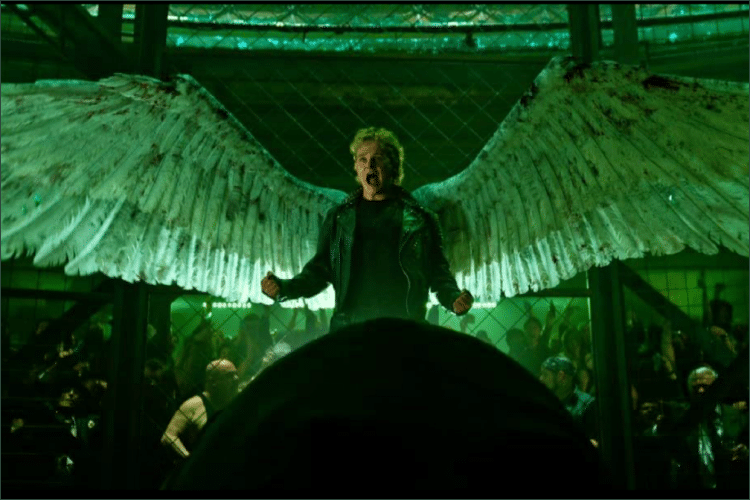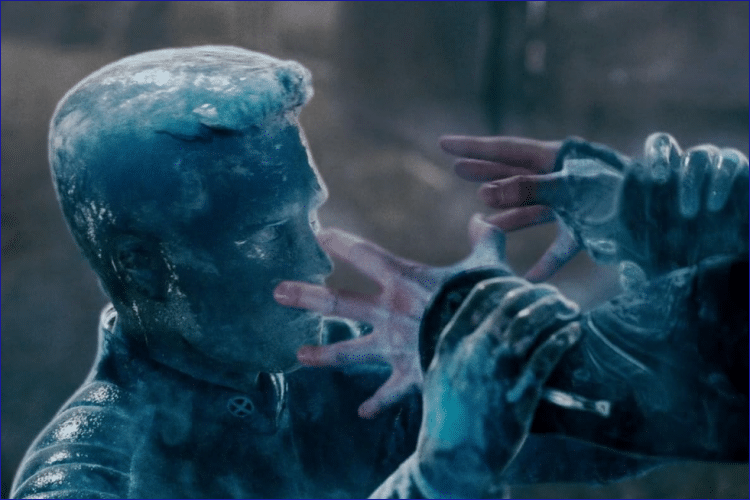The Most Dangerous Dames
Rufus 3000: “Wasn’t it clear that Shego was the only one smart enough to take over the world?”
Kim Possible: Sitch in Time
Kim: “…I guess it always seemed more like a guy thing.”
Female villains are underused. Many fans expect villains to be a cunning 50-something man or a brute who could bench press Stallone. There may be a henchwoman or a lieutenant, but they rarely matter to the plot. They’re a honeypot for the protagonist or an eventual victim of the main villain.
Gender biases in fiction are shifting, and female supervillains lead the charge. While they’ve fallen into the same tropes, these lethal ladies are more likely to fire a death ray than swoon over an action hero. They may also weaponize seduction or perceptions of victimhood to mislead enemies. So who are the top 5 Female Supervillains? Let’s find out.
Scene Select
#6 Poison Ivy
Played By: Diane Pershing, Uma Thurman, Lake Bell
Poison Ivy: “It’s been a long time, Harvey. You’re still looking… halfway decent.”
Batman the Animated Series “Almost Got ‘im” (Season 1, Episode 46)
Two-Face: “Half’a me wants to strangle you.”
Ivy: “And what does the other half want?”
Two-Face: “To hit ya with a truck.”
Ivy: [aside] “We used to date.”
Joker and Penguin: “Ahhh.”
Many people inaccurately believe that effective but indirect tools are “women’s weapons.” They’ll disparage poison, manipulation, ranged attacks, or anything that doesn’t use bulging muscles to ram phallic weapons into an enemy. This female supervillain is smart enough to ignore that BS.
Dr. Pamela Isley was a botanist studying under Professor Jason Woodrue. He experimented on her, transforming Isley into a half-human plant elemental. Isley could sense plants suffering through her powers and became an ecoterrorist called Poison Ivy.
Poison Ivy targeted CEOs to cause the most damage possible to polluting companies. She preferred seducing her targets into a poisoned kiss, but was perfectly happy ripping them apart with vines. Poison Ivy occasionally served as a feminist strawman, but more often hated all humans aside from her girlfriend Harley Quinn.
Poison Ivy has slowly shifted into an anti-hero thanks to Harley’s influence. She also discovered that her powers came from The Green, a hivemind of all plant life on Earth. Learning to control The Green provided a massive power boost, but sometimes encourages her misanthropic side into genocide.
#5 Female Supervillain: Typhoid Mary
Played By: Alice Eve, Tara Strong, Natassia Malthe
Typhoid Mary: “One of us is tender, one of us is not. One of us takes vengeance, All four tied in a knot.”
Girl Comics #3 (2010)
Female villains are often shown as transitory. The most famous example is the archetype of the innocent Maiden who grows into the nurturing Mother before becoming the wise, but stern Crone. This female supervillain can play all three roles at once.
Mary Walker was a failed actress who became a sex worker in a mob-owned brothel. Daredevil broke into the brothel while hunting his father’s murderer and accidentally knocked Mary out of a window during the fight. The incident activated her mutant powers, but also triggered dissociative identity disorder. She emerged as an assassin calling herself Typhoid Mary.
Mary is a pacifist Alter with a big heart who is rarely in the driver’s seat. Typhoid is the Alter most commonly in control, a thrill-seeker who seduces superheroes between crimes. Bloody Mary hates men and is violent enough to scare off the nigh-immortal Deadpool. The plurality uses Typhoid Mary as a catch-all name.
Typhoid Mary is a skilled martial artist and swordfighter. Her mutation gives her telepathy, telekinesis, and pyrokinesis like an older version of Firestarter’s Charlie. Typhoid Mary recently made waves by marrying The Kingpin, giving her access to a vast criminal empire.
#4 The Child
Played by: Erika Ishii
Night Watchman: “Child, what ‘chu doin’ in here? [sees Flaw] And what is that?!”
Young Justice “Odnu!” (Season 4, Episode 9)
Child: “Child? Hm… I like it. Thank you, sir. You have served a valuable purpose. Flaw, please reward this mortal accordingly. [Flaw kills him as Child admires her reflection and giggles] This new form looks adorable! Still… I wonder what these things look like on the inside.”
Female supervillains usually aren’t the big gun. They’re seen as reliant on trickery, beauty, or combat skills. This young newcomer has gods and devils running scared.
The Child is a Lord of Chaos, one of several destructive godlike beings. She was tasked with killing another Lord named Klarion for serving The Light, a supervillain team seeking Order through tyranny. Already powerful, the other Lords gave Child their power to kill Klarion and wreak havoc.
Child created a crystalline familiar named Flaw to anchor her to Earth. He served as her protector while she battled Klarion and the Sentinels of Magic. Child discorporated Klarion, beat the Sentinels bloody, and had both the superhero and supervillain communities teaming up to counteract her one girl apocalypse.
The Light’s founder acted as an emissary of Balance, convincing the Lords of Chaos to take back their power provided there was no interference. A restored Klarion and the Sentinels of Magic destroyed Flaw, banishing the weakened Child forever.
Child is polite and says kind things, but is also sadistic and feigns a childish personality to disarm foes. She represents the Lords of Chaos, gleefully causing global disasters while disparaging her bratty brother. Child’s overwhelming power was a double-edged sword that caused her to forget about Flaw’s namesake weakness.
#3 Female Supervillain: Lady Shiva
Played By: Kelly Hu, Gwendoline Yeo
Batgirl: “Just tell me… how many? Killed. Since we fought?”
Batgirl #73 (2006)
Lady Shiva: “With my own hands? Forty-eight.”
Batgirl: “Will you ever stop?”
Lady Shiva: “It’s why I had you.”
Female supervillains aren’t expected to have raw power and make up for that with agility and combat skills. This warrior is the deadliest non-powered fighter in the DC Universe.
Sandra Wu-San was a martial artist with a superhuman understanding of body language. Her sister was killed and the evidence implicated fellow martial artist Richard Dragon. Sandra trained to take revenge and renamed herself Lady Shiva.
She fought Richard Dragon until he proved his innocence. She began traveling with him to seek atonement, but found she loved the thrill of combat too much. She became a serial killer who fought other masters to the death to improve her skills.
Lady Shiva doesn’t have superpowers, but often displays quasi-mystical traits. Several cults worship her as a goddess. Lady Shiva has a death wish and is searching for someone able to kill her in a fair fight. To that end, she gave birth to a daughter who became Batgirl.
Lady Shiva’s tale isn’t done yet. Read up on this master of the martial arts in her backstory.
#2 Granny Goodness
Played By: Ed Asner, Cloris Leachman, Deborah Strang
Granny Goodness: “To be clear, Desaad, that wasn’t torture. That was discipline. I love Barda enough to punish her for her own good. But you’ll see torture soon enough.”
Young Justice “Influence” (Season 3, Episode 14)
Female supervillains often commit lesser crimes than their male counterparts. This evil goddess topped our list of irredeemable supervillains. It’s hard to be redeemed if genocide is on your rap sheet, after all.
Granny Goodness runs several orphanages on the hellish planet Apokolips. There, bright young minds are broken down in service of Darkseid, the God of Tyranny. Goodness acts as a grandmother, convincing the children that their suffering and slavery is a proper life.
When not performing her duty as Goddess of Abuse, Granny Goodness leads the Female Furies, the women comprising Darkseid’s harem and elite bodyguards. Goodness has often brainwashed heroes like Supergirl and Mary Marvel into serving as Furies.
Granny Goodness is the closest thing Darkseid would accept to a trusted aide. She is loyal and helps keep disruptive elements in line. On her own time, Granny Goodness hunts Mr. Miracle, the only man to ever escape her orphanage, and his wife, Big Barda, a traitorous ex-Fury.
#1 Female Supervillain: Mystique
Played By: Rebecca Romjin, Jennifer Lawrence, Lena Heady
Mystique: “I am everywhere. I am nowhere. A shadow, unchained and unleashed. The world made me this way, so let the world suffer. Whoever its masters may be.”
Inferno (2022)
Female supervillains often waver between good and evil. Chalk that up to the villainess falling in love with a hero or forming a familial bond with them before another writer returns to their usual characterization. This female supervillain keeps her foes guessing.
Mystique’s past is one of Marvel’s biggest secrets. The only concrete details are that her name is Raven Darkholme, her shapeshifting mutation triggered early, she had an abusive father, and she was Sherlock Holmes. She works as a terrorist often serving The Brotherhood of Evil Mutants, but just as often turns against mutantkind to further her own goals.
Mystique met a Mutant named Destiny whose precognition had blinded her. She hired Mystique to help her prevent the disaster she had foreseen, killing anyone in their way for the greater good. Destiny eventually married Mystique and is the only one she’ll show her true face to.
The X-Men can occasionally persuade Mystique to work with them through her children, Nightcrawler and Rogue. That doesn’t always work and Mystique has tried to kill her children several times. She is a chameleon and perhaps the only Marvel character unbound by any faction or moral code.
Which Female Supervillain do you think is the best? Did we miss your favorite femme fatale? Tell us in the comments.

Jared Bounacos has written for Movie Rewind since 2016.





Leave a Reply